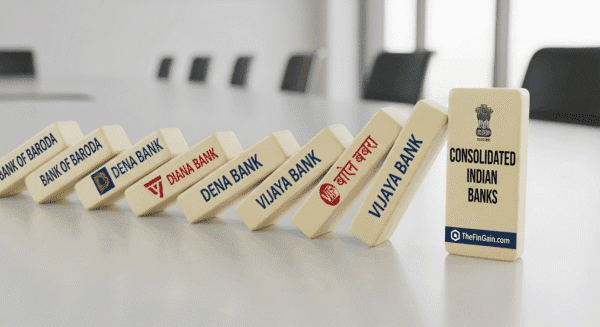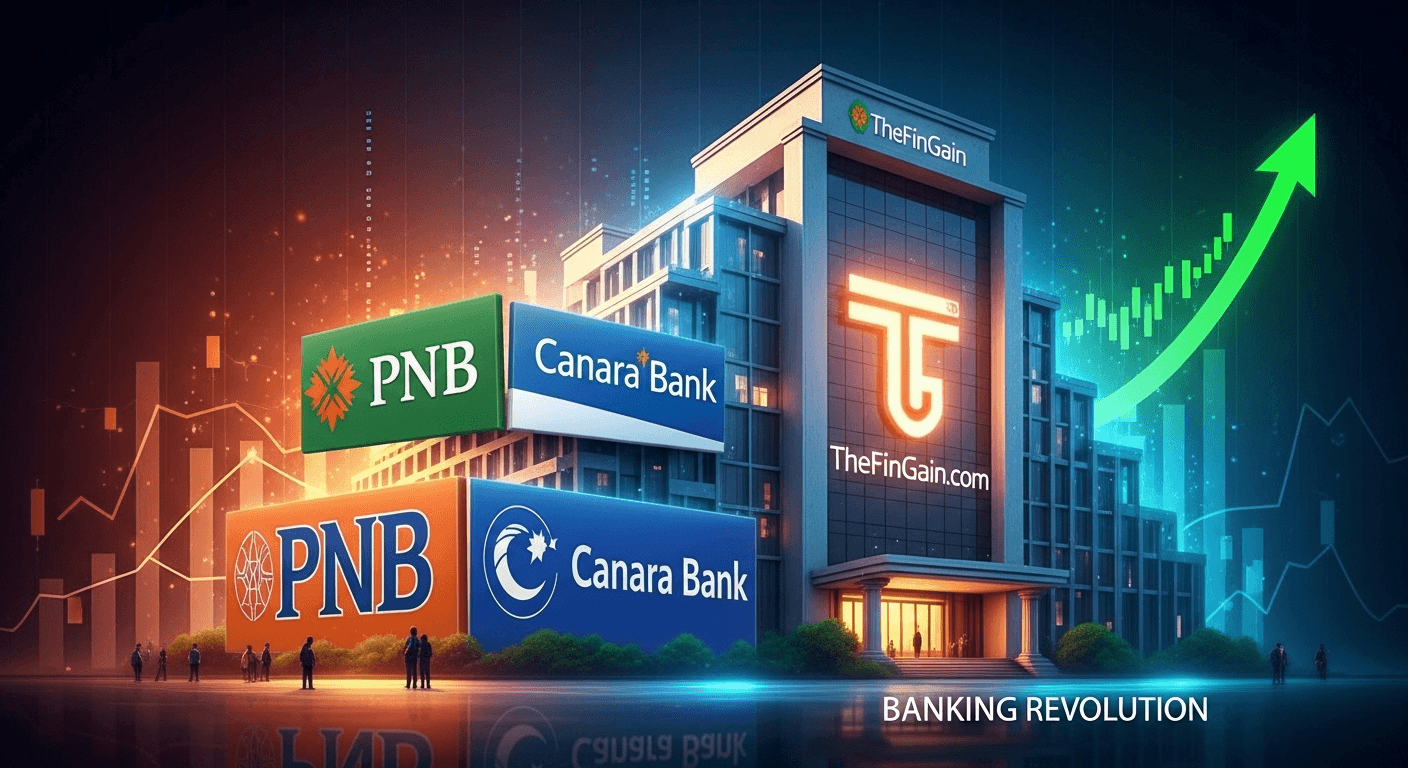
Mega merger of government banks: 7 Shocking Ways It Will Change Indian Banking Forever
Remember when you had a dozen different government banks to choose from, each with its own quirks and queues? Those days are over. The Indian government has hit the ‘combine’ button, triggering a mega merger of government banks that has fundamentally reshaped the country’s financial landscape. This isn’t just a simple name change; it’s the biggest banking shake-up India has seen in decades.
You’ve probably heard the news, but what does it really mean for you? Is your money safer? Will your loans get cheaper? Or is this just a recipe for massive confusion?
We’re here to cut through the jargon. This move, which consolidated ten public sector banks (PSUs) into four massive entities, was designed to create fewer, but much stronger, global-sized banks. The goal is to fix the bleeding balance sheets, cut costs, and improve lending.
But the impact of this bank merger on customers—that’s you—is profound. Your account number, your branch, your ATM card, and even your loan agreements are all in for a change. Let’s dive into the 7 shocking ways this mega merger of government banks is changing your world right now.
Table of Contents
- Why Did This Mega-Merger Even Happen?
- Change 1: Your Account Number and IFSC Code Are Now History
- Change 2: Your Old Cheque Book and Cards Are Now Useless
- Change 3: Branch Closures and the Hunt for Your New ‘Home’ Branch
- Change 4: The Big Squeeze on Loans and Deposits
- Change 5: A New, (Hopefully) Better Digital Banking Experience
- Change 6: The Impact on Bank Employees and Customer Service
- Change 7: The “Too Big to Fail” Effect (Is Your Money Safer?)
- Frequently Asked Questions (FAQ)
Why Did This Mega-Merger Even Happen?
Before we look at the effects, let’s understand the why. Imagine you have ten small water buckets, and five of them have holes (these are Non-Performing Assets or NPAs). The buckets are leaking water (money) fast. Instead of trying to patch ten leaky buckets, the government decided to melt them down and forge four much larger, stronger, and (hopefully) leak-proof barrels.
The primary reasons for the mega merger of government banks were:
- To Tackle NPAs: Many individual banks were struggling under mountains of bad loans (NPAs). By merging weaker banks with stronger ones, the government aimed to create a combined entity with a healthier balance sheet.
- To Create “Global-Sized” Banks: India had many banks, but none were big enough to compete on the world stage. This consolidation creates banks with a massive asset base, capable of funding large infrastructure projects and competing globally.
- To Improve Efficiency: Running ten separate head offices, ten IT systems, and ten treasuries is expensive. Merging them cuts down on these duplicate costs, theoretically making banking more efficient. You can read more about the government’s official rationale on the Press Information Bureau (PIB) website.
Change 1: Your Account Number and IFSC Code Are Now History
This is the most immediate and critical change. When your bank (let’s say, Oriental Bank of Commerce) merges into another (Punjab National Bank), your old bank ceases to exist.
Your old account number is no longer valid. You will be issued a brand new account number and, just as importantly, a new IFSC code after the merger.
What this means for you (ELI5): Your account’s “address” has changed. The old IFSC code is like your old house number, and it simply won’t work anymore. You must update this new IFSC code everywhere:
- With your employer for your salary credit.
- For all your automatic bill payments (SIPs, EMIs, insurance).
- In your income tax records.
- With anyone who regularly sends you money.
Failure to do this will result in failed transactions, bounced payments, and potential penalties.
Change 2: Your Old Cheque Book and Cards Are Now Useless
That cheque book from Vijaya Bank? It’s now a collector’s item. The same goes for your old debit and credit cards.
The new, merged bank (the “anchor bank”) will issue you a brand new cheque book and new cards with its own branding. There’s usually a grace period, but after that, your old payment instruments will be declined. This mega merger of government banks forces a complete refresh of your banking toolkit.
This process can be messy. Banks have to mail out millions of new kits, leading to delays and activation hassles. The key is to be proactive: apply for your new cheque book and cards before the deadline hits.
Change 3: Branch Closures and the Hunt for Your New ‘Home’ Branch
Remember that friendly neighborhood branch of your bank? It might not be there anymore.
One of the main goals of the mega merger of government banks is to cut costs by eliminating overlapping branches. If an Allahabad Bank and an Indian Bank branch were on the same street, one of them was almost certain to be closed or relocated.
This means your “home branch”—the branch where you opened your account—may have changed. You’ll be assigned a new home branch, which might be less convenient. This affects everything from simple cash deposits to more complex tasks like loan applications or locker access.
Change 4: The Big Squeeze on Loans and Deposits
This is where things get interesting for your wallet.
- For Loans: If you had a home loan with, say, Andhra Bank, it’s now a loan with Union Bank of India. The interest rate regime might change. While your existing loan agreement is typically honored, the bank may try to move you to its own interest rate structure (e.g., from MCLR to an External Benchmark Rate). This could make your loan rates after the bank merger go up or down.
- For Fixed Deposits (FDs): Your existing FD will continue at the promised interest rate until it matures. However, when you go to renew it, you will only get the interest rates offered by the new bank, which could be lower than what your old bank used to offer.
- For Minimum Balance: The rules for Average Monthly Balance (AMB) will change. A smaller bank might have required a ₹1,000 minimum, but the new, larger entity might demand ₹3,000 or ₹5,000, increasing your risk of paying penalties.
Change 5: A New, (Hopefully) Better Digital Banking Experience
This is the potential silver lining of the mega merger of government banks. Smaller banks often had clunky, outdated mobile apps and slow net banking portals.
The larger anchor banks, like Bank of Baroda or PNB, have more money to invest in technology. The merger forces a single, unified, and (in theory) more advanced digital platform. You’ll have to download a new mobile app and get used to a new interface, but the payoff should be a smoother, faster, and more secure digital banking experience.
This digital migration is a massive undertaking. The Reserve Bank of India (RBI) sets strict guidelines for data security and customer convenience during this IT integration, but hiccups are inevitable.
Change 6: The Impact on Bank Employees and Customer Service
This is the human side of the mega merger of government banks. When banks combine, there are widespread changes in employee roles, seniority, and transfers. This can lead to a period of low morale and confusion among staff.
You may find that the bank staff you’ve known for years are suddenly transferred, and the new staff are still learning the ropes of the combined bank’s products and systems. This can, and often does, lead to a temporary dip in customer service quality. Be prepared for longer wait times and dealing with employees who might be just as confused as you are.
Change 7: The “Too Big to Fail” Effect (Is Your Money Safer?)
This is the biggest long-term consequence. The mega merger of government banks has created behemoths. The idea is that these banks are now “Too Big to Fail” (TBTF).
This means the government simply cannot afford to let them collapse, as it would destroy the entire economy. This adds an implicit layer of security to your deposits, over and above the standard ₹5 lakh deposit insurance. Your money is, in theory, safer than ever because it’s in a fortress-like bank that has the full backing of the government.
However, some experts, like those at global rating agencies, warn that this TBTF status can also make banks reckless, knowing they’ll be bailed out. For now, though, the prevailing view is that this consolidation enhances financial stability.
Frequently Asked Questions (FAQ)
What was the final list of merged government banks in India?
- Punjab National Bank (PNB) merged with Oriental Bank of Commerce and United Bank of India.
- Canara Bank merged with Syndicate Bank.
- Union Bank of India merged with Andhra Bank and Corporation Bank.
- Indian Bank merged with Allahabad Bank.
What happens to my account after a bank merger? Do I need to close it?
No, you do not need to close your account. Your account is automatically migrated to the new, merged bank. However, you will receive a new account number, new IFSC code, new cheque book, and new debit/credit cards.
Is my old cheque book’s validity over after the bank merger?
Yes. After a grace period (which is now over for all recent mergers), your old cheque book is invalid. Any cheque issued from it will be rejected. You must use the new cheque book issued by the anchor bank.
Will my home loan EMI change after the merger?
Your EMI itself may not change immediately, but the underlying interest rate benchmark might. The new bank will manage your loan. Be vigilant and check your loan statements for any changes in interest rates or terms.
Conclusion
The mega merger of government banks was a monumental surgery on India’s financial system. The short-term recovery has been painful for many customers, filled with paperwork, confusion, and new rules. We’ve all had to update our IFSC codes, get new cheque books, and find our new “home” branches.
However, the long-term vision is one of strength and stability. The goal was to create a handful of globally competitive, efficient, and technologically advanced banks that are “Too Big to Fail.”
For you, the customer, the storm of transition is mostly over. The key now is to be aware of the new rules of your bigger, stronger bank. Check your minimum balance requirements, understand your new loan terms, and embrace the new digital platforms. This new banking landscape is here to stay, and the more you know, the better you can navigate it.
#megamergerofgovernmentbanks #indianbanking #psubanks #financenews #bankingreforms
For more insights, visit TheFinGain.
For Live IPO Tracker, please visit https://latestipo.in/
Tools

